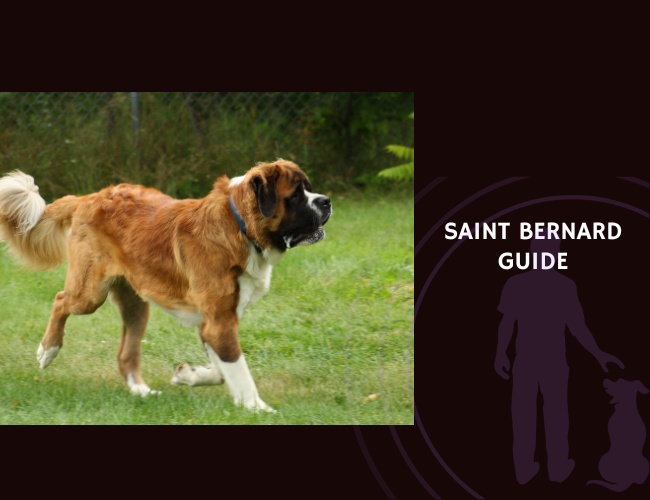Quick Facts about the Saint Bernard
- Origin: Switzerland
- Weight: 64–120 kg (male), 54–100 kg (female)
- Life expectancy: 8–10 years
- Coat Colour: White with red, red and white, brindle patches
- Breed Group: Working
The Saint Bernard is a massive, gentle giant famed for its rescue history, sweet nature, and devotion to family. With a powerful build and soulful eyes, it embodies strength, patience, and warmth.
Saint Bernard History
The Saint Bernard originated in the Swiss Alps, developed by monks at the Great St. Bernard Hospice in the 17th century. Bred for rescue missions in snowy mountain passes, these dogs located and aided lost or injured travellers—often carrying supplies or warming people with their bodies.
Descended from Roman Molossian dogs and local Alpine mastiffs, the breed became legendary for its bravery and life-saving abilities. Recognised by the AKC in 1885, the Saint Bernard remains a beloved symbol of Swiss hospitality and loyalty.

Saint Bernard Temperament
Saint Bernards are gentle, patient, and incredibly devoted. Despite their size, they’re calm and affectionate—often described as “nanny dogs” for their gentleness with children.
They are slow to mature and can be clumsy as puppies. While friendly with strangers, their sheer size makes early training and socialisation essential. They respond best to positive, structured guidance and enjoy close contact with their families.
Note: Saint Bernards drool heavily and require homes that can accommodate their size and grooming needs.
Health and wellness
Saint Bernards need daily moderate exercise—structured walks, gentle play, and plenty of rest. Due to their rapid growth and large bones, puppies must be managed carefully to avoid joint stress.
Their thick coat (short or long) needs regular brushing, especially during shedding seasons. Skin folds and ears must be kept clean.
Significant problems:
Hip and elbow dysplasia
Bloat (gastric torsion)
Cardiomyopathy
Entropion (eyelid disorder)
Osteosarcoma (bone cancer)
Life expectancy: 8–10 years

The Complete Guide to Saint Bernard
🔍 Looking to go deeper into dog training?
Use these categories to explore targeted guides and articles on canine behavior, nutrition, obedience, entertainment, and more.









